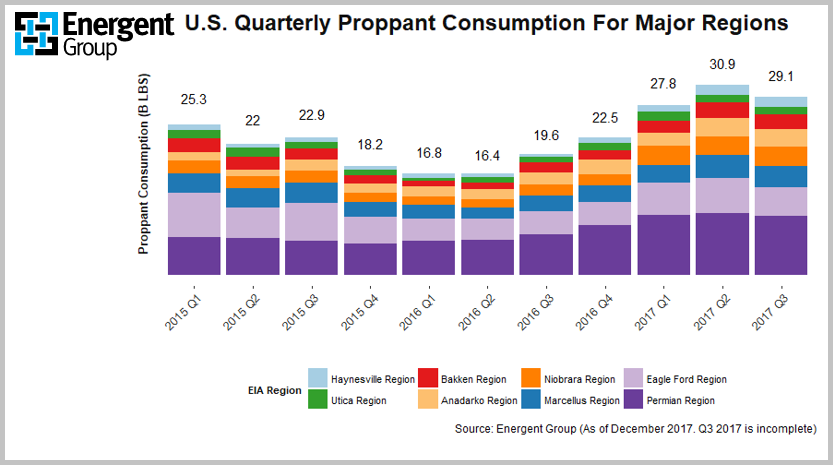Offshore – dead and buried, thanks to onshore shale? Not quite. The OFS world moves fast. Data from the Energent team in Houston indicates that consumption of sand for hydraulic fracturing in the onshore US market hit new highs of over 30 billion lbs (13.6 billion kg) in Q2 last year, topping the previous peak in 2014, despite only half the number of land rigs working. The US completions market is running in overdrive. But how does this impact the remainder of the OFS business?

Offshore, the market is also recovering. However, pricing pressure is absent. The industry simply built up too much capacity for the expected level of activity, leading to an oversupply of rigs, construction vessels, and support vessels. This is good news for E&P companies that can now take advantage of rock-bottom pricing when sanctioning new developments.
Activity levels are certainly showing encouraging trends. A total of 17 FPS units were ordered in 2017 (compared with zero orders in 2016), and a further 19 units are expected to be ordered this year, according to the latest online data in Westwood’s SECTORS. E&P companies are starting to report that some deepwater projects have more favourable project economics than shale, with Hess in recent weeks citing the example of Liza Phase 1 in Guyana requiring circa $35/bbl in order to break even, with a comparable onshore project in the Delaware Basin requiring $45/bbl. Guyana has proven a huge success for Exxon and its partners, with further encouraging discoveries (the sixth, Ranger, was announced this month) with proven reserves standing at 3.2bn bbls, excluding Ranger. A second FPSO for Liza, with a production capacity of up to 200 kbbl/d, is expected to be ordered in 2019.
Looking forward, Westwood is tracking 39 FPS units currently under construction, and has identified nearly 100 further FPS deployment prospects in the coming years. The summary is cautious optimism for the offshore sector as we enter 2018, and an opportune moment for E&P companies to be sanctioning projects.

Follow us on social media: